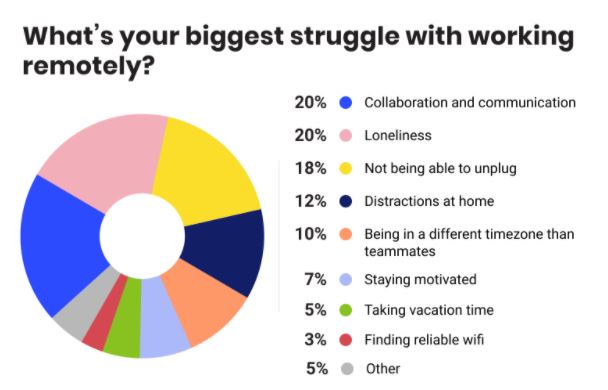The above chart includes results from an employee engagement survey completed earlier this year by Buffer, a social media company. Over 3.500 remote workers around the world completed the survey. Although it seems fairly clear that the survey was done before the Coronavirus pandemic, and includes data that is really not relevant now, I thought the results shown on this chart were telling. Remote work and the challenges inherent in it were true before the pandemic and are still true today.
“Collaboration and communication” and “loneliness” were rated the highest and this should be no surprise. Developing an inclusive environment happens through a concerted effort by management, and requires a daily practice of inclusive behavior. Conscious focus on inclusion will leads to higher employee morale and increased productivity.
Management needs to be mindful of the following to ensure they get the most from their remote workers:
Develop a sense of belonging
Employees want to feel that managers and colleagues care about one another. In an office environment, managers and employees demonstrate care and belonging through in-person social interactions, such as a cubicle conversation, a chat in the coffee room or a meeting at the water cooler. In a remote work environment, demonstrating care is far more challenging.
Managers should allocate time each week to talk with employees, not only to discuss performance expectations, but to also share things regarding their daily lives which are mutually challenging and relatable. Getting to know team members on a more personal level helps build trust. Also, managers can’t advocate for an employee without understanding what they are facing.
Encourage participation
Managers should make it a point to draw employees into team discussions and ensure that team members have an equal opportunity to contribute in virtual meetings.
Create structured team building
Management needs to work on ways to simulate social interactions that encourage connectedness as a substitute for in-person engagement. Events to consider can be virtual coffee chats, happy hours, team celebrations and digital recognition. These are all relatively easy ways to encourage a group of any size to convene and bond with one another.
Employee Resource Groups (ERGs)
Creating employee resources groups (ERGs) who collaborate on mutual challenges can also be beneficial. These are groups who can successfully drive change by connecting employees with shared identities. Management should identify the ERGs that have the greatest ability to understand how different groups of employees are handling the new remote work environment.
ERGs can also support emerging employee needs. For example, a group for working parents may be able to offer ideas and guidance to employees on how to balance caregiving and work responsibilities.
Reevaluate inclusion efforts
Employees working from home should be reviewed individually by management . Benefits, work-from-home resources and other offerings should be reviewed to ensure they continue to accommodate employees with diverse needs. All employees, including working parents, employees with caregiving responsibilities, sick employees, quarantined employees, and employees with disabilities may require new or different support as they work from home.
Marzano Human Resources Consulting can help you develop strategies needed to keep your remote workers engaged and productive during these trying times.

